Which Of The Following Occurs During Inhalation
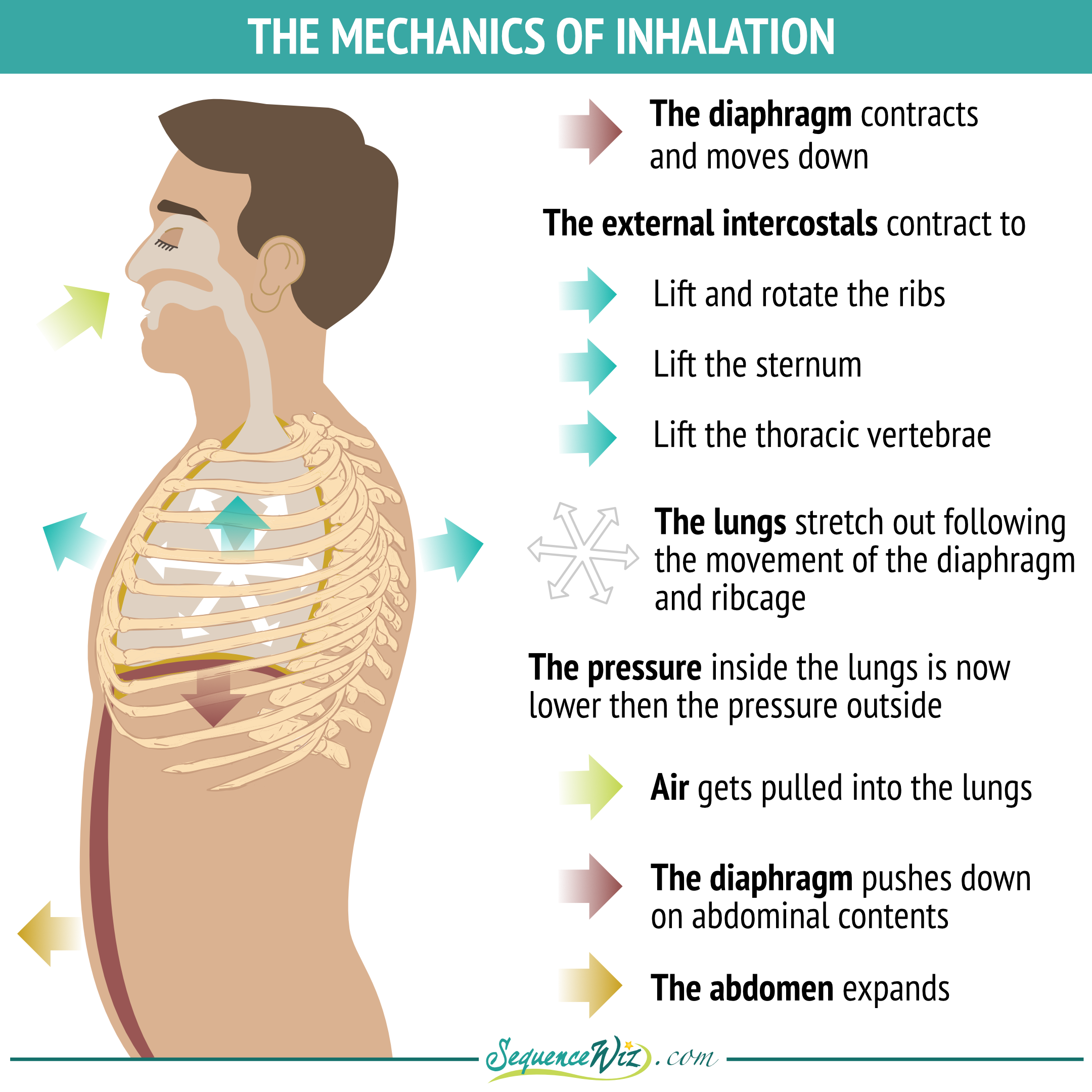
A surge of questions is flooding medical websites and educational platforms: what exactly happens when we inhale? Understanding the mechanics of breathing is crucial for health education and emergency response.
This article dissects the key physiological processes that occur during inhalation, clarifying the roles of the diaphragm, rib cage, and pressure changes that facilitate air entering our lungs.
The Diaphragm's Descent: The Primary Driver
The diaphragm, a dome-shaped muscle at the base of the chest cavity, is the primary muscle responsible for inhalation. Upon stimulation by the phrenic nerve, the diaphragm contracts. This contraction causes it to flatten and descend.
As the diaphragm moves downward, it increases the vertical dimension of the thoracic cavity. This expansion is the first critical step in creating a pressure gradient that allows air to flow into the lungs.
Rib Cage Expansion: Increasing Volume
Simultaneously, the rib cage expands. The intercostal muscles, located between the ribs, contract. This action elevates the ribs and expands the chest both upwards and outwards.
The movement of the ribs further increases the volume of the thoracic cavity. This expansion is critical for creating a significant pressure difference between the atmosphere and the lungs.
Pressure Gradient: Air Rushes In
The increased volume of the thoracic cavity leads to a crucial pressure change. As the volume expands, the pressure inside the lungs, known as intrapulmonary pressure, decreases.
This decrease in pressure creates a pressure gradient. The pressure inside the lungs becomes lower than the atmospheric pressure outside the body. Air, naturally, flows from areas of higher pressure to areas of lower pressure.
Consequently, air rushes into the lungs through the nasal passages or mouth, traveling down the trachea, bronchi, and into the alveoli, where gas exchange occurs. This is the essence of inhalation.
Key Physiological Events in Summary
During inhalation, the following events occur in a coordinated sequence:
- The diaphragm contracts and descends.
- The intercostal muscles contract, elevating the rib cage.
- The volume of the thoracic cavity increases.
- The intrapulmonary pressure decreases.
- Air flows into the lungs.
These steps are essential to understand how breathing works. Deviations from normal breathing patterns can signal underlying medical conditions.
Clinical Significance and Continued Monitoring
Understanding the mechanics of inhalation is vital for diagnosing and treating respiratory illnesses. Conditions such as asthma, pneumonia, and chronic obstructive pulmonary disease (COPD) directly impact the ability to inhale effectively.
Monitoring breathing patterns and lung function is crucial in clinical settings. Healthcare professionals utilize various tools, including spirometry and pulse oximetry, to assess respiratory health.
Continued research is essential to further understand the complexities of respiratory physiology. Future studies may focus on improving diagnostic techniques and developing more effective treatments for respiratory diseases.
Dissemination of Knowledge
Educating the public about the physiology of breathing is crucial. Increased awareness can empower individuals to take proactive steps to protect their respiratory health.
Resources are available from reputable organizations like the American Lung Association and the National Institutes of Health. These resources provide valuable information on respiratory health and disease prevention.
Sharing this knowledge can help individuals recognize early warning signs of respiratory distress. Early intervention is often critical for improving outcomes.
What Doesn't Happen During Inhalation: Debunking Misconceptions
It's important to clarify what does not occur during inhalation. The lungs do not actively "suck" air in. Instead, the creation of a pressure gradient causes air to passively flow into the lungs.
The rib cage does not remain stationary. It actively expands due to the contraction of the intercostal muscles, contributing to the increase in thoracic cavity volume.
The pressure inside the lungs does not increase during inhalation. Instead, it decreases, creating the driving force for air to enter.
Next Steps and Ongoing Education
For those seeking more in-depth information, consulting with a medical professional or exploring advanced physiology textbooks is recommended. Understanding the nuances of respiratory mechanics can be incredibly beneficial.
Ongoing research and education are key to improving respiratory health outcomes. Stay informed about the latest advancements in respiratory medicine and preventative care.
Promoting healthy breathing habits and advocating for clean air are essential steps. These measures can significantly impact respiratory well-being for individuals and communities alike. Stay vigilant, stay informed, and breathe easy.
![Which Of The Following Occurs During Inhalation [FREE] Which of the following describes what occurs during inhalation](https://media.brainly.com/image/rs:fill/w:3840/q:75/plain/https://us-static.z-dn.net/files/da1/176a076e6815f158b3a01b6f6487b06c.png)








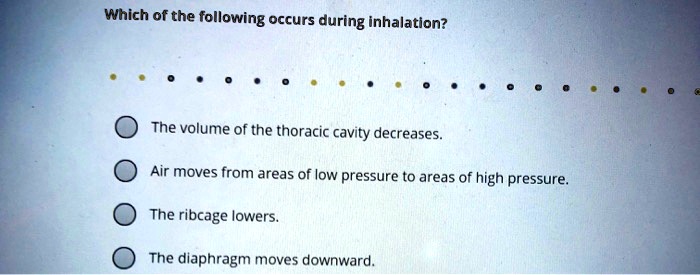


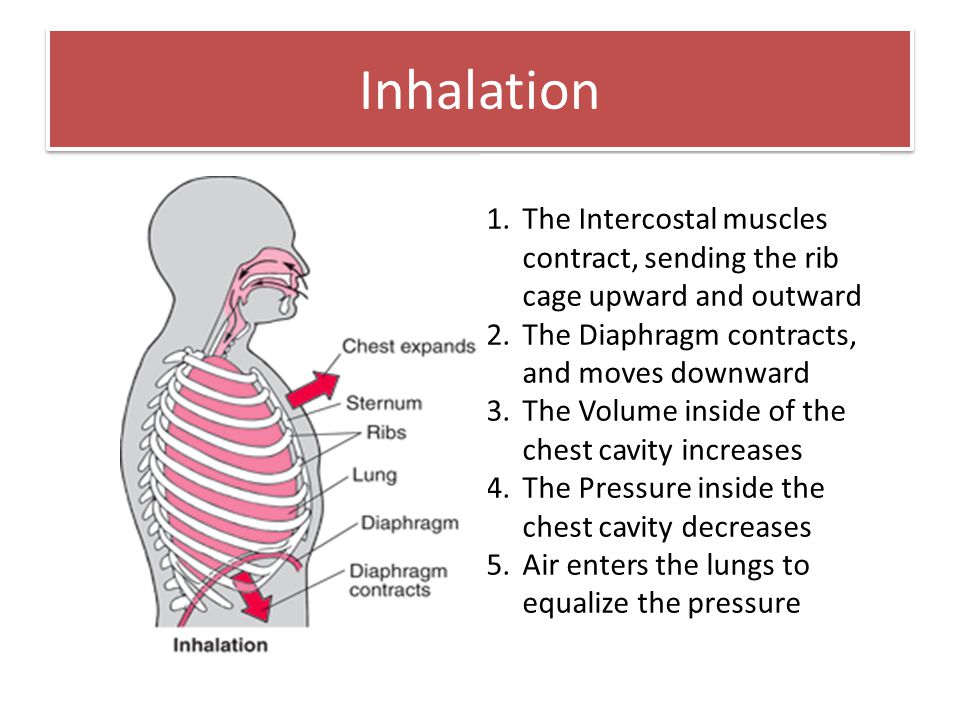
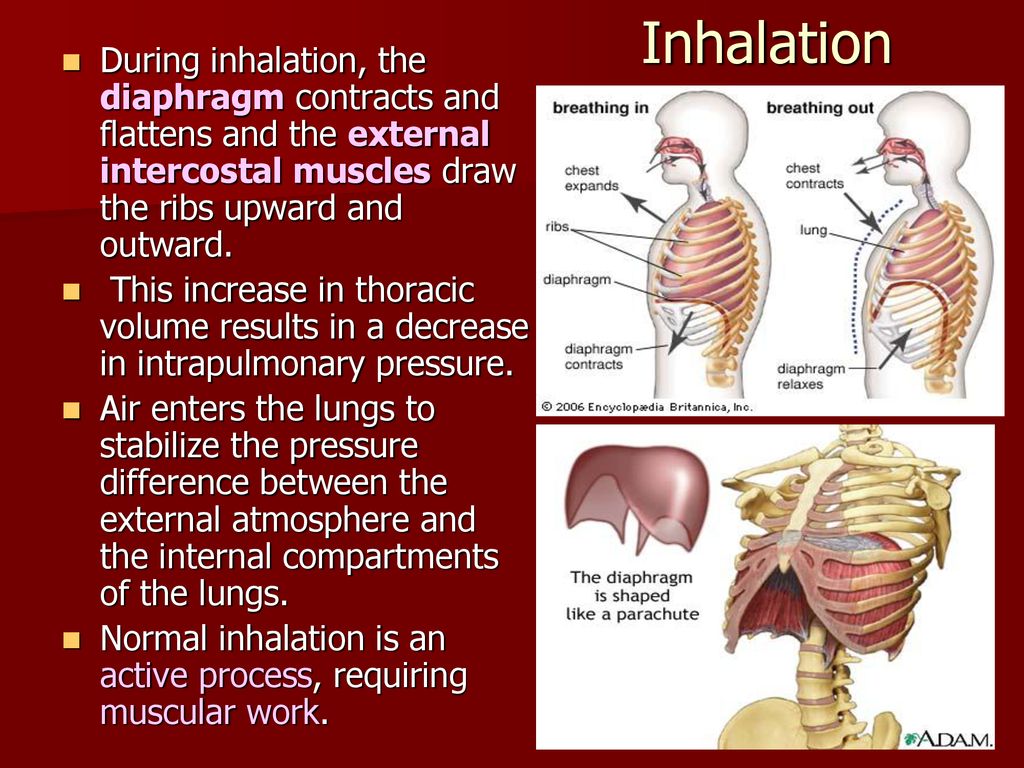
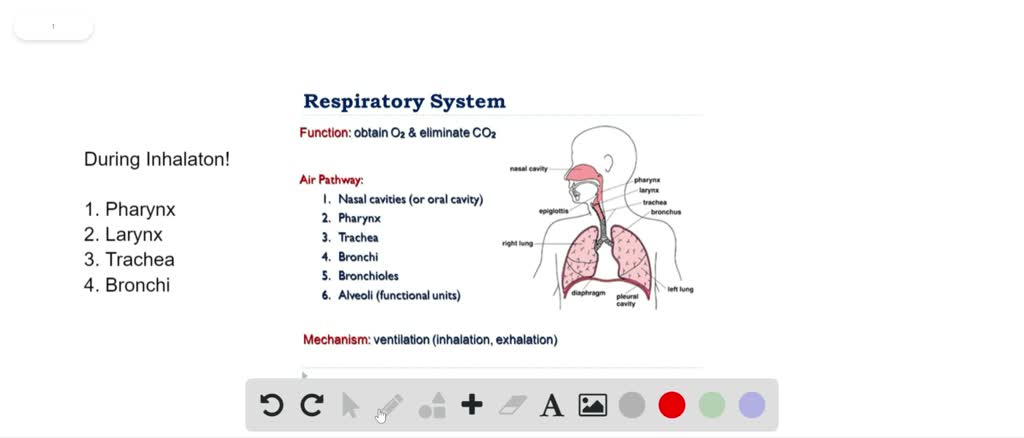
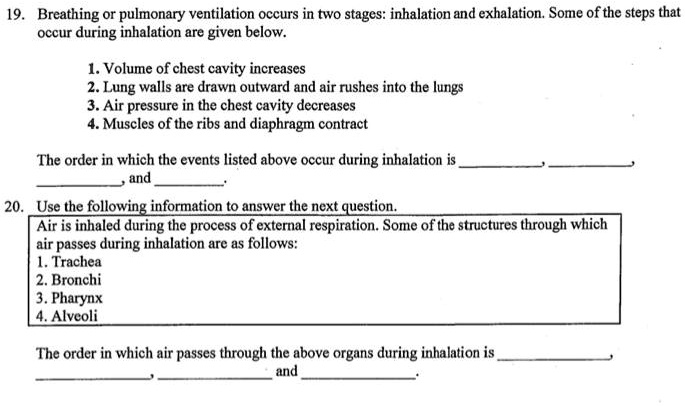
![Which Of The Following Occurs During Inhalation Which is the correct sequence of air passage during inhalation? [MCQ]](https://d1avenlh0i1xmr.cloudfront.net/0f1e67b0-4b04-4bf4-9b13-6fb8f8bd10c5/the-respiratory-system-01.jpg)

